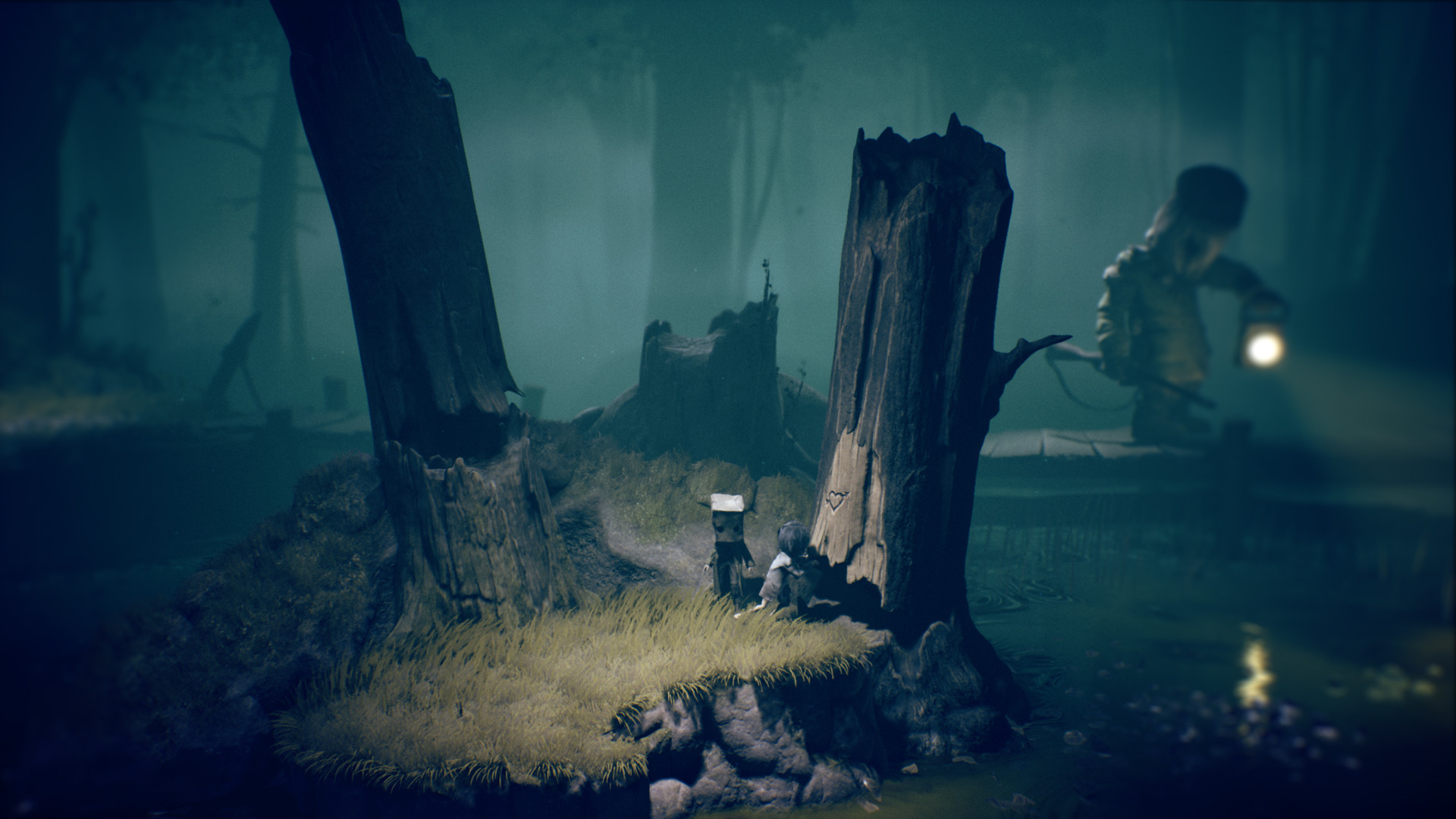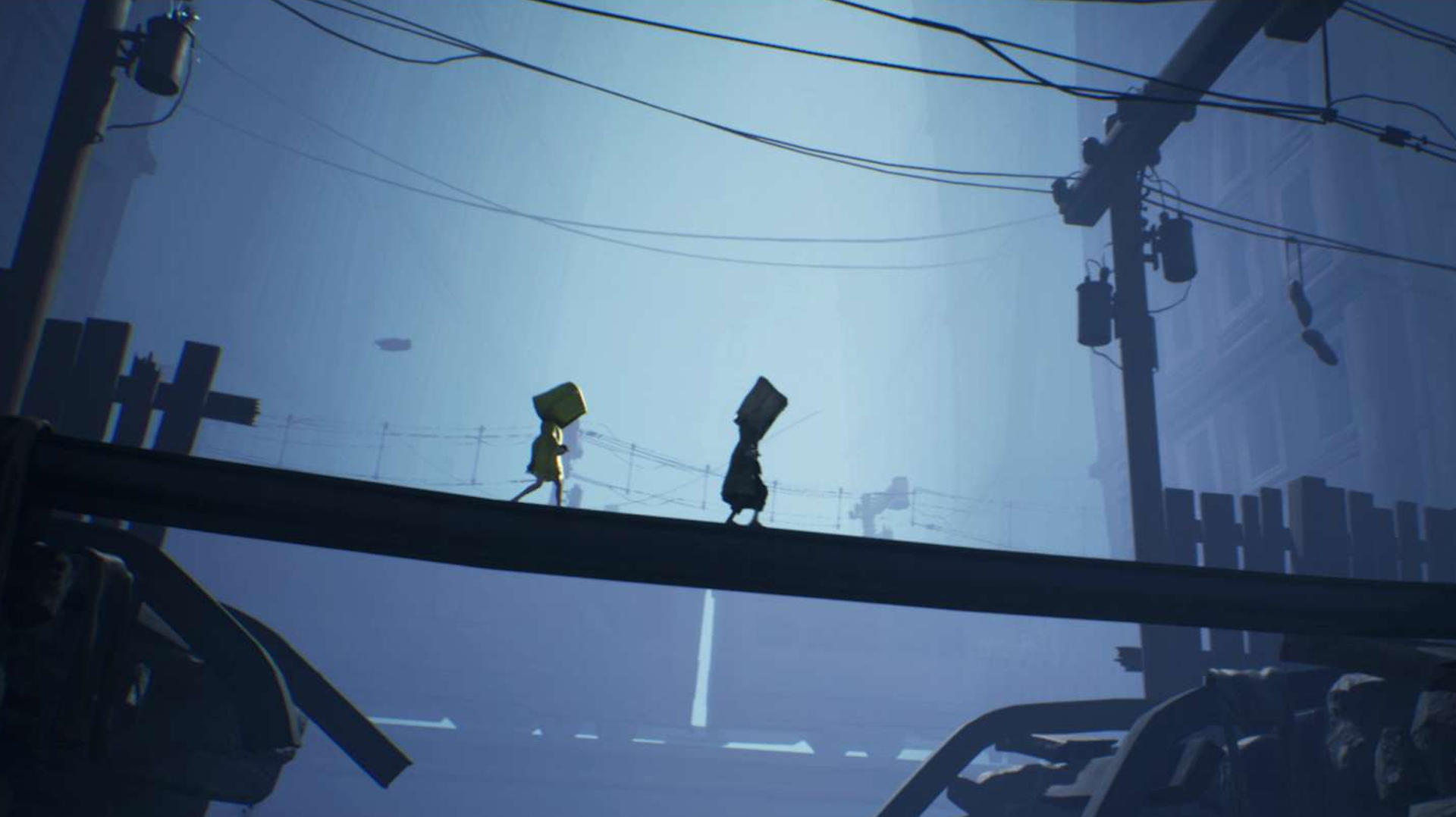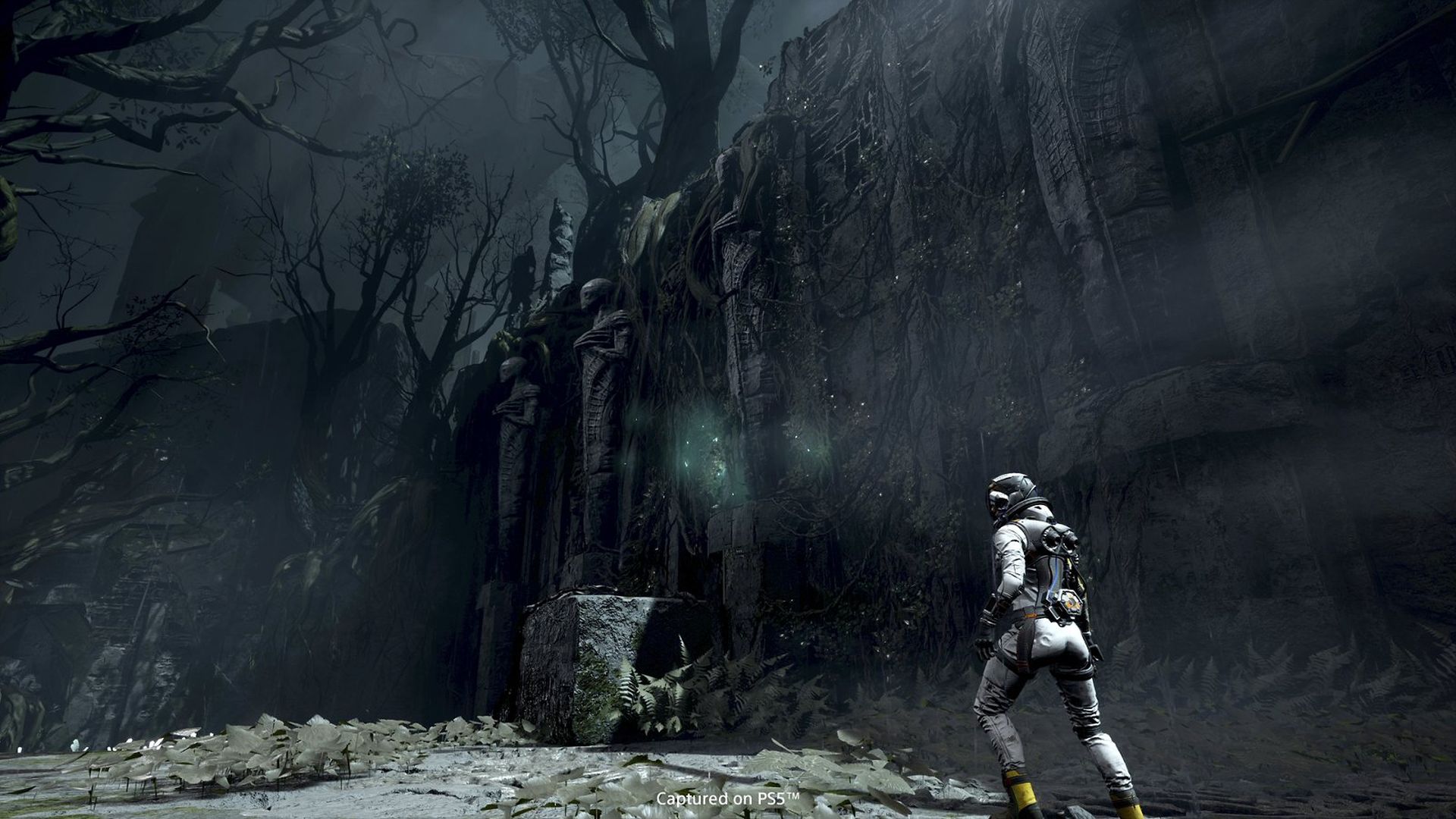
In 2017, Tarsier Studios transported players to the bizarre, creepy world of Little Nightmares, a wonderful gem of a game that somehow managed to be childishly endearing and deeply disturbing all at once. Almost four years later, the indie developer is back with a sequel, and fans of the first game will be glad to know that Little Nightmares 2 is better than its predecessor in almost every way possible. It recognizes and retains the biggest strengths of the first game, and expands on its scope in key ways that, while feeling true to the series’ formula, improve the experience significantly. The end result is a stirring, unsettling horror experience that – in spite of being a bit too brief – is full of unforgettable moments.
Little Nightmares 2 introduces a new protagonist, a boy named Mono, while Six, the previous game’s protagonist, accompanies you on your journey as an AI-controlled companion. While the first game was set completely within the innards of the underwater vessel called The Maw, Little Nightmares 2 is much larger in scope, with Mono and Six travelling to the decaying metropolis of The Pale City. The denizens of The Pale City are constantly glued to their television screens, which emit signals being sent out by an entity known as The Thin Man from the Signal Tower that looms in the distance, with these signals turning everyone into brainwashed freaks.
"Little Nightmares 2 is a stirring, unsettling horror experience that – in spite of being a bit too brief – is full of unforgettable moments."
Like its predecessor, Little Nightmares 2 tells its story completely wordlessly, but also like its predecessor, it does so expertly. The environmental storytelling is on point here, whether that’s through easily missable cues in your surroundings that tell the story of a particular location, or through grand and large-scale vistas and sequences that paint a grim picture of this horrifying world. Little Nightmares 2 constantly does a lot with very little, and it consistently strikes the perfect balance between telling the story the developers want to tell and being ambiguous and leaving things open to interpretation. All of this also culminates in a terrific, shocking ending. I can’t say much about it, for obvious reasons, but the final few minutes of the game deliver some major surprises that I did not see coming, and am still thinking about.
Tarsier Studios also use the larger scope of Little Nightmares 2 to flesh out the game’s world in incredible ways. From a forest to a school to a hospital to the ruins of The Pale City, the game takes you to a variety of different locations, and each of them sports excellent visual and art design. Every single room you find yourself in has its own story to tell if you just take a knee and look around for long enough, and collectively, the entire game does an excellent job of painting a clear (and rather bleak) picture of what Little Nightmares’ world looks like outside of The Maw.
The art and visual design of the game has a huge role to play in that, as you’d expect. From the grotesque monstrosities and horrors you run into to multiple scenes of striking imagery, Little Nightmares 2 is a visually stunning game. Lighting is also used to great effect, with the plumes of mist and pervasive darkness of the hospital, for instance, being lightened ever so slightly by the weak and flickering beam of illumination from your flashlight. Strong art design and impressive technical elements are constantly working hand-in-hand in Little Nightmares 2 to make every second of this creepy journey through hell come alive.
"Like its predecessor, Little Nightmares 2 tells its story completely wordlessly, but also like its predecessor, it does so expertly. The environmental storytelling is on point here, whether that’s through easily missable cues in your surroundings that tell the story of a particular location, or through grand and large-scale vistas and sequences that paint a grim picture of this horrifying world."
Similar to the story and the world, Little Nightmares 2’s gameplay also sees improvements and additions to expand upon the previous game’s scale. The biggest addition here is, of course, the fact that you now have an AI-controlled companion with you. Barring a few sections, Six and Mono spend most of the game in each other’s company, and the game leverages their cooperation to great effect. Exploration and puzzles often require the two to work together, and the execution is solid enough that you truly feel Six’s absence in the sections where she’s not with you. Puzzle design itself also deserves plenty of praise. None of the puzzles you run into are brain teasers by any means, but there’s an undeniable quality to their simplicity. The game also keeps mixing things up and rarely ever reuses ideas or mechanics for major puzzles, so monotony and repetition never set in either.
Little Nightmares 2 also introduces combat into the equation- though it handles combat in the most Little Nightmares way possible. Instead of being a constant underlying mechanic, it is instead much more contextual. Every now and then, Mono can pick up blunt weapons scattered about the environments – like hammers or lead pipes – to attack enemies with. Mono’s movement as he drags these heavy weapons behind him is impeded, while every swing is a slow and deliberate action, which means Little Nightmares 2 manages to keep things slow and deliberate even during more out-and-out moments of confrontation.
Combat situations contribute greatly toward injecting variety into the kinds of scenarios you find yourselves in and the hurdles you face, and are used sparingly enough that they don’t ever lose their value. Occasionally though, shoddy hit detection can make things a bit frustrating, while the windows in which you have to attack enemies also tend to be a bit too small and specific. Mono isn’t the most durable character, and all it takes to kill him is a single hit, so having to reload from checkpoints repeatedly through no fault of your own can be a little grating.
"Combat situations contribute greatly toward injecting variety into the kinds of scenarios you find yourselves in and the hurdles you face, and are used sparingly enough that they don’t ever lose their value. Occasionally though, shoddy hit detection can make things a bit frustrating, while the windows in which you have to attack enemies also tend to be a bit too small and specific."
In spite of the addition of combat though, horror and stealth are still paramount in Little Nightmares 2. Anyone who’s played the first game will know how adept Tarsier Studios are at crafting tense encounters with enemies – be they the kind that require stealth or the kind that serve more as dramatic set-piece moments – and Little Nightmares 2 is brimming with such moments as well. In my experience, the game’s first chapter wasn’t particularly scary, but the tension and atmosphere kept ramping up at a constant pace. Enemy design also deserves to be called out. Throughout its runtime, Little Nightmares 2 throws a lot of, well, nightmares at you, and they’re each creepier than the last, from haphazardly stitched together mannequin-like patients in a hospital to a terrifying teacher who can stretch her neck to great lengths and bend them around corners as she tries and hunts you down.
The trial-and-error nature of the first game is also still very much present in these encounters, and barring a few sections where things felt a bit too arbitrary or a bit too punishing, I was consistently impressed with the creativity showcased in how they were designed. The hospital chapter, for instance, is absolutely terrific and has some of the best and most terrifying moments of the entire game. It constantly had me on the edge of my seat, which is all I can say about it without spoiling anything.
I only wish the game was a little longer and had more of these excellent moments to deliver. I finished Little Nightmares 2 in about five and a half hours, and though hunting for collectibles and exploring the environments to take on some optional tasks (which will feel very familiar to those who’ve played the first game) can add to that runtime, the game still feels a bit too brief. If you’re the “quality over quantity” kind of player, Little Nightmares 2 will definitely satisfy your needs, but those who’re looking for more quantitative bang for their buck might find the $30 launch price a little steep.
"Anyone who’s played the first game will know how adept Tarsier Studios are at crafting tense encounters with enemies – be they the kind that require stealth or the kind that serve more as dramatic set-piece moments – and Little Nightmares 2 is brimming with such moments as well."
The one area where Little Nightmares 2 doesn’t make enough improvements over its predecessor is the platforming and movement. Like its predecessor, its nature as a 2.5D experience often works against it and makes for inaccurate and clumsy movement. All too often, I misjudged and miscalculated jumps. On top of that, more than a few times, the issues with the movement combined with the eccentric controls to result in cheap deaths. The lenient checkpoints ensure that things don’t ever become too frustrating, but the clumsy movement and finnicky controls can still be a bit of a nuisance.
Be that as it may, whatever moments of frustration exist in Little Nightmares 2 are mostly limited to rather specific situations. They’re also all too brief – much like the game itself, actually. But while that last point may count as a knock against it, it is what it does with its runtime that really helps set Little Nightmares 2 apart. It makes every single moment count to craft a truly unsettling experience and to wordlessly deliver an expertly paced and impactful story. If you were already a fan of the original game, Little Nightmares 2 goes bigger and better in the ways that any great sequel should. Even if you haven’t had the pleasure of playing through its predecessor though, Little Nightmares 2 serves as the perfect entry point into this disquieting horror series.
The PlayStation 4 version of this game was reviewed on the PlayStation 5 via backward compatibility.








